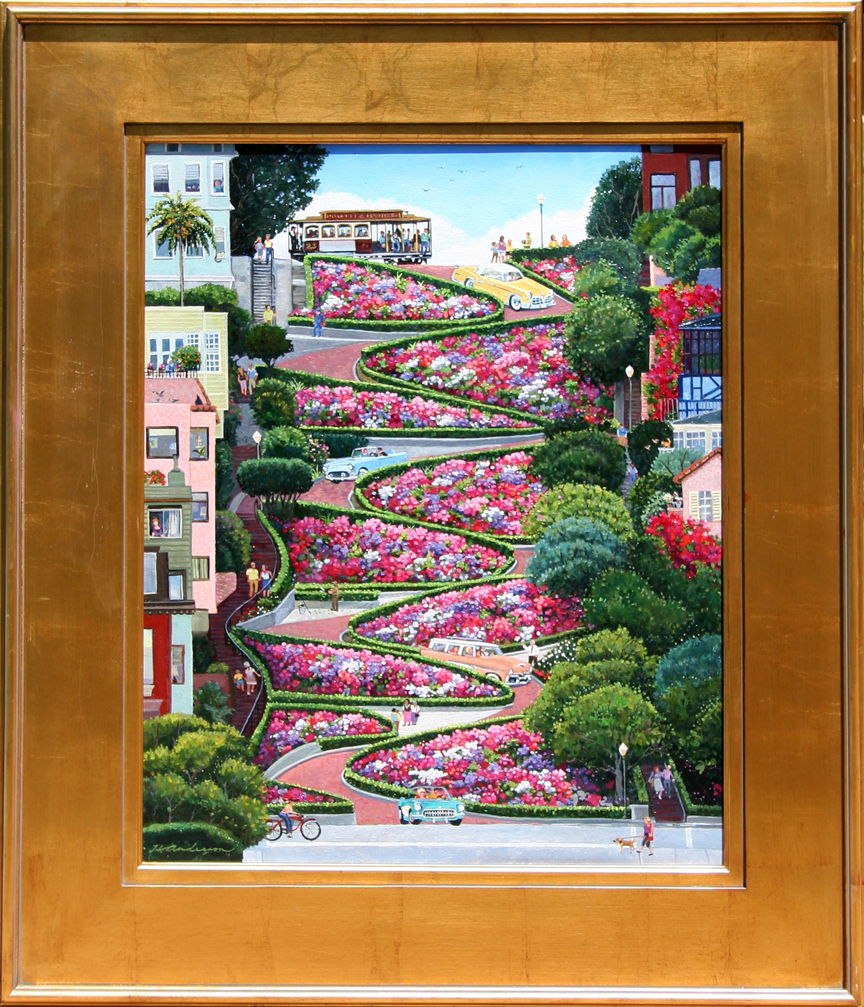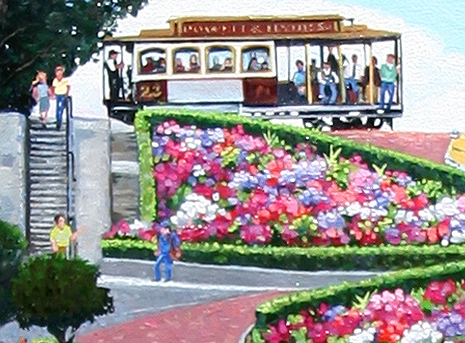"G
r a n d p a ' s H y d r a n g e a s"

"G r a n d p a ' s H y d r a n g e a s" o i l o n c a n v a s 2 4 " x 3 0 " ( p r i v a t e c o l l e c t i o n )
| 1000 Block of Lombard Street The
crooked block began as a straight, cobblestoned street. By
1900 it was lined with large homes and fine gardens. The south
side of the street was dynamited in 1906 to stop the advance of
the fire, and residents rebuilt their homes there within a short
time. With the advent of the automobile, the 27% grade proved
too steep for vehicles, and in 1922 the city agreed to reduce the
grade to 16% and to build a curved two-way street paved in brick.
The city spent $8,000 on this project. In return, property
owners on the block agreed to pay for brick steps adjacent to their
homes, maintain the plantings, and install and maintain light fixtures.
In 1939, the street was made one-way |
detail |
© 2009 Howard Anderson. All Rights Reserved
